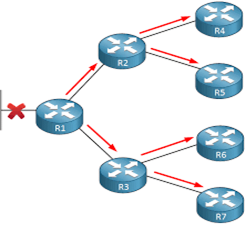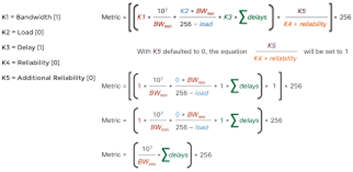WHAT IS STUCK IN ACTIVE IN EIGRP, TYPES OF TABLES & BASIC CONFIGURATIONS?
In the previous blog, I have discussed complete insights to EIGRP and its messages and you can read the blog on our website.
Stuck in active in EIGRP

When a router notices a route failure and there is no feasible successor, that route moves in active state from passive. That route sends a query message to its neighbour, and it will wait 3 minutes for the reply. If a router does not receive a reply within the active timer, that route will consider a stuck-in-active state. If the router does not receive a reply within 3 minutes router will flap the neighborship with its neighbour.
Solution of stuck in active
Disable active timers
Router(config-router)# timers active-time disabled
Stub router
Router(config-router)# eigrp stub
Types of the table in EIGRP

1. Neighbor Table
Information about its neighbor will be available in the neighbor table.
Router# show ip eigrp neighbor
2. Topology Table
It contains all destination advertise routes by neighbor routers that come from the neighbor routing table.
Router# show ip eigrp topology
Router# show ip eigrp topology all-links
3. Routing Table
It contains the best route to each remote network and its path is called successor. It will contain three types of routes- internal, external, summary.
Router# show ip route
Router# show ip route 2.2.2.0
Router# show ip route eigrp
Router# show ip route eigrp 100
Null 0
It is a loop avoidance mechanism entry stored in the routing table, null 0 will be created only in case of summarization(auto&manual). If any traffic goes towards null 0 then it will drop by EIGRP.
Metric value

It uses a composite metric for route selection.
- K1*1 = Bandwidth (measured in kilobytes per second)
- K2*0 = Load (numbers from 1 to 255)
- K3*1 = Delay (measured in 10’s of a microsecond)
- K4*0 = Reliability (numbers from 1 to 255, 255 is most reliable)
- K5*0 = MTU
Serial- Bandwidth 1544kbps, delay 20,000 microseconds
Fast Ethernet- Bandwidth 100000kbps, delay 1000 microsecond
Loopback- Delay 5000 microsecond
How to change metric weights
Router(config-router)# metric weights 0 1 1 1 1 0
Passive interface
Router(config-router)# passive-interface default
Router(config-router)# passive-interface ethernet 0/0
Unequal-cost load-balancing
EIGRP automatically supports load balancing over four equal-cost routes. EIGRP supports up to 32 equal-cost paths with ios version 15.0, in the previous ios version we have 16 paths.
Offset-list
It is used for equal-cost load-balancing or path manipulation
Router(config)# access-list 1 permit 2.2.2.0 0.0.0.255
Router(config-router)# offset-list 1 in 100 (on all interface)
Router(config-router)# offset-list 1 in 100 ethernet 0/0 (for specific interface)
Router# show ip protocol (to check the offset list)
How to change the maximum path
By default, EIGRP supports equal-cost load balancing in 4 paths. We can modify it up to 32 in ios version 15.0 and above.
Router(config-router)# maximum-path 8 (1 to 32)
Here you can get more information about configuration.
Zindagi Technology is a lead IT consulting company, we have successfully completed lots of IT projects, we provide IT solutions like cyber security, IT security, planning, designing, and implementation of data centers, cloud-based services, application development, etc. We can guide you in your network programs. You can ping us at 9773973971 or email us too.
Author
Lokesh Kumar
Associate Consultant
